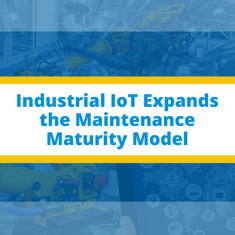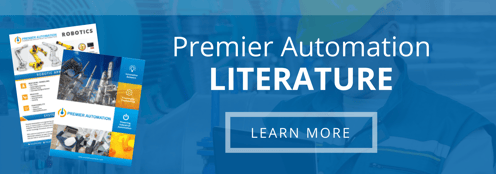 The ultimate goal of Internet of Things based technologies & equipment is to phase-out manual processes and replace them with efficient, automated ones. With the introduction of IoT to industrial environments, new automated systems are emerging that are able to take care of all processes involved with asset management, right from collecting data to carrying out inspections through in-depth analysis.
The ultimate goal of Internet of Things based technologies & equipment is to phase-out manual processes and replace them with efficient, automated ones. With the introduction of IoT to industrial environments, new automated systems are emerging that are able to take care of all processes involved with asset management, right from collecting data to carrying out inspections through in-depth analysis.
Industrial IoT isn’t a new concept. It’s simply an abstraction of Internet of Things in the manufacturing industry and includes concepts such as big data and machine learning. When combined with analytics, IIoT can greatly enhance maintenance strategies. IIoT-enabled remote asset tracking for instance can take into account a plethora of parameters, and monitor them in a cost-effective & accurate manner. Put advanced analytics on top, and you have for yourself a system that can carry out detailed analysis and suggest ways through which efficiency may be improved. All in all, the maturity of the maintenance system will prosper, and soon, it would move along the line to a more advanced level.
These are the major stages of maturity of any maintenance system. As the system gains maturity, the business starts to gain greater profits and reduced costs. The benefits come in the form of, on-time shipments, customer satisfactions, quality, inventory-check, etc. all of which can greatly boost the company’s standing in the market.
But before progress can be made along this line, the industrial world should stand united on the definition of maturity. IIoT has highlighted this problem and a recent review has uncovered that advanced maturity levels have several inconsistencies. There is no standard to follow, which creates confusion and ultimately delays in development of solutions.
Expanded Maintenance Maturity Model
An ARC Report in 2015 published the Asset Management Maturity Model in 2015, and classified maintenance into five maturity levels. These levels or stages brought a lot of much-needed standardization in the world of maintenance models.
Starting from the bottom:
- Reactive: Most assets are considered fail-proof or are either too non-critical to worry about. For them, reactive maintenance is followed which can be seen as a “run to failure” approach. This means that the equipment would only be fixed after it has broken.
- Preventive: In this case, maintenance is carried out after a specific time period. For instance, you would generally replace the batteries of your smoke detector after a given period of time, or charge your car battery after a certain number of miles. Such maintenance applies to industrial equipment that has a limited lifespan or has a certain part that is prone to age-related failure.
- Condition-Based: This sort of monitoring brings in the concept of a sensor that would monitor a certain parameter such as amplitude of vibration, number of cycles, etc. CBM or Condition-Based Monitoring usually applies to rotary equipment or instruments & control systems. Such monitoring would keep the workers in loop and allow them to take preventive steps beforehand, but manually.
- Predictive: Machine learning is commonly used with Predictive Maintenance, and several parameters are taken into account as per the requirement. Engineered algorithms are used to analyze these parameters, and a warning is generated before failure takes place. This level of maturity doesn’t make use of big data, and has limited futuristic capabilities.
- Prescriptive: The Holy Grail of Maintenance Maturity stages, Prescriptive Maintenance makes use of Big Data and Analytics to monitor and predict equipment failure. It collects data over time, and by analyzing common trends, notifies user of any upcoming fault. It can even suggest maintenance sessions that would prevent the onset of equipment failures.
Increasing the system’s maturity to such a level involves greater investment and technical knowhow, but the model can positively contribute to the business in the long-term. There would be no unexpected shutdowns, and as a result no loss of resources rectifying the faults, which would only add to lost revenue.
Benefits of Higher Maturity
Up to 50 percent savings have been reported by users who’ve moved from reactive approaches to prescriptive ones.
In terms of maintenance, the Prescriptive approach has brought:
- Greater uptime
- Asset longevity
- Safety
- Cost control
- Greater yield & quality
Predictive and Prescriptive maintenance has the tendency to bring near-zero unplanned downtime to your mission-critical assets, which can create a ripple effect in the executive world leading to greater revenue, higher customer satisfaction and better risk mitigation.
Industrial IoT can provide the essential technologies required to drive to higher maintenance maturities, and allow organizations to automate their systems. Robust communication is a precursor to such maturity levels as real-time relaying of sensory information would only be possible if the communications are fast, safe and error-free. IT resources would have to be greatly engaged for the development of such a system, and the scope of the project may get bigger over time, but the continual benefits reaped would outweigh the costs.
Premier Automation offers industry specific technology solutions to help our customers increase their industrial productivity, efficiency and overall systems performance.
Interested in learning more about Premier Automation?




